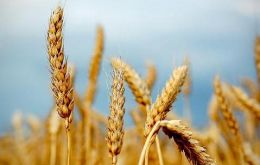MercoPress. South Atlantic News Agency
Tag: Food and Agriculture Organization (FAO)
-
Friday, October 10th 2014 - 06:13 UTC
Bumper harvests and stockpiles driving down cereal prices, says FAO report

Food markets are more stable and prices for most agricultural commodities are sharply lower than they have been in recent years, according to the latest edition of FAO's biannual Food Outlook report and a new update to the Organization's monthly Food Price Index.
-
Saturday, September 13th 2014 - 07:11 UTC
World cereal production forecasted to be a record in 2014, according to FAO

FAO's Food Price Index is a trade-weighted index that measures prices of five major food commodities on international markets: in addition to sub-indices for prices of cereals, it also tracks meat, dairy products, vegetable oils, and sugar.
-
Tuesday, August 5th 2014 - 06:42 UTC
Food loss and waste in Latam could feed the region's 47 million hungry

In Latin America and the Caribbean more food is lost and wasted than is needed to meet the nutritional needs of the 47 million people who still suffer from hunger in the region, according to FAO. The report Losses and waste of food in Latin America and the Caribbean of the FAO Regional Office says that 6% of global food losses occur in the region.
-
Monday, July 7th 2014 - 22:49 UTC
FAO/WHO elaborating new guidelines for identifying food-borne parasites

A “Top Ten” list identifying the food-borne parasites of greatest global concern has been released by FAO, and new guidelines are being developed to control them. The parasites affect the health of millions of people every year, infecting muscle tissues and organs, causing epilepsy, anaphylactic shock, amoebic dysentery and other problems. Some can live on in our bodies for decades.
-
Monday, July 7th 2014 - 22:42 UTC
FAO food price index down for third month running: plenty of corn and wheat

The FAO Food Price Index was down for a third consecutive month in June, a decline mostly influenced by lower wheat, maize and palm oil prices that reflected ample supplies and improved global production prospects for these commodities.
-
Monday, June 9th 2014 - 06:27 UTC
FAO Food Price Index down for the second consecutive month in May

The FAO Food Price Index was down for the second consecutive month in May, continuing its retreat from the 10-month high it experienced in March. Prices fell as generally ample supplies weighed on international prices for most commodities included in the Index.
-
Saturday, May 24th 2014 - 09:52 UTC
FAO challenge: insects to feed sustainably a world population of 9 billion

Insects can provide a sustainable and environmentally-friendly option for animal feed, in addition to already being a mainstay of human diets for 2 billion people worldwide, FAO Assistant Director-General Eduardo Rojas-Briales told an international gathering of researchers in The Netherlands.
-
Saturday, May 24th 2014 - 09:34 UTC
Reducing fisheries wastage, harmful practices and improving traceability

An estimated 1.3 billion tons of food are lost per year, which is up to about one-third of all food produced. This figure includes post-harvest fish losses, which tend to be greater in small-scale fisheries, according to the latest edition of FAO’s The State of World Fisheries and Aquaculture.
-
Wednesday, May 21st 2014 - 06:58 UTC
FAO warns fisheries and aquaculture threatened by harmful practices and poor management

More people than ever before rely on fisheries and aquaculture for food and as a source of income, but harmful practices and poor management threaten the sector’s sustainability, says a new report published by FAO.
-
Friday, April 4th 2014 - 07:48 UTC
FAO food price index in March climbs to its highest since May 2013

The FAO Food Price Index rose sharply in March, up 4.8 points, or 2.3%, to an average of 212.8, the highest level since May 2013. The Index, based on the prices of a basket of internationally-traded food commodities, saw prices increase in all groups except dairy, which fell for the first time in four months (-2.5%). Sugar, 7.9% and Cereals, 5.2% climbed the most.
